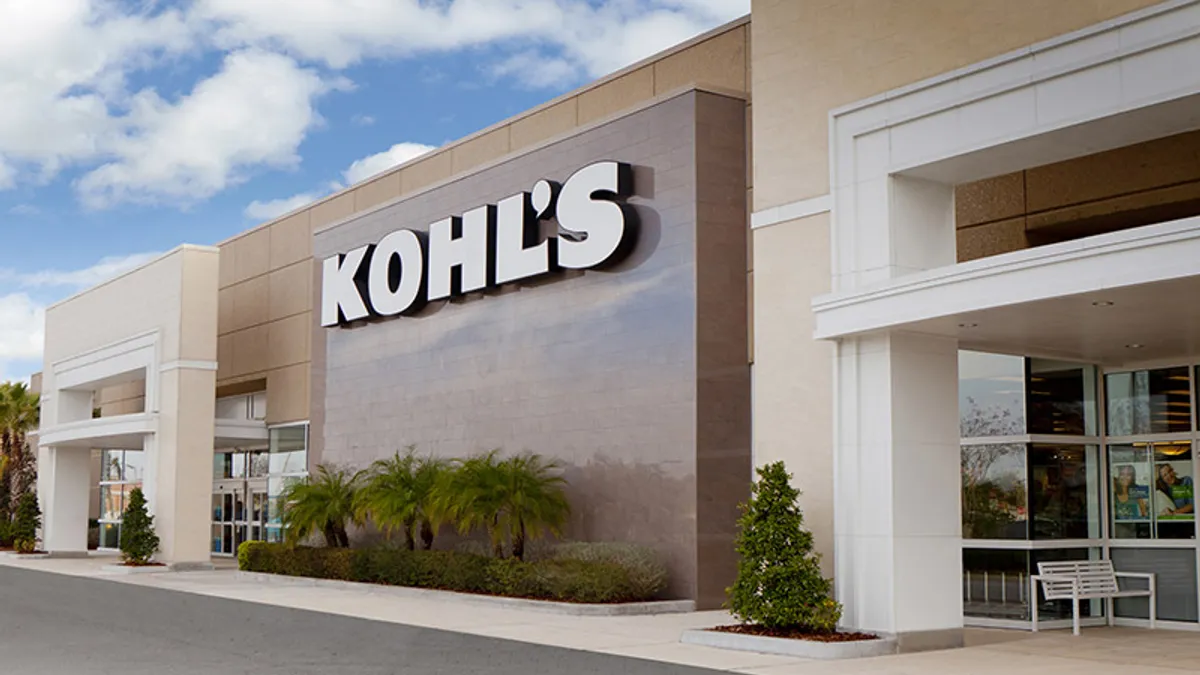Dive Brief:
- After reducing receipts 30% in the first quarter, Kohl's will double that reduction in Q2, executives said on a Tuesday earnings call.
- "We reduced inventory receipts, extended payment terms and reduced expenses across the business, including marketing, technology and operations," CEO Michelle Gass said. Inventory in the first quarter was down 3% over Q1 2019 and further reductions are in the retailer's plans through the rest of the year.
- Gass described a "step change" in inventory visibility and related technological capability in the last few months as the chain shifted to shipping 40% of e-commerce orders from stores. At the same time, Kohl's reduced 2020 capital expenditures by 70% which will push back planned technology spending and a sixth e-commerce fulfillment center.
Dive Insight:
Addressing inventory was the first action Kohl's executives took when it became clear that stores would need to close. Kohl's was not alone here with 11% of North American apparel retailers canceling more than half of their planned orders in response to the coronavirus crisis, according to McKinsey. Kohl's closed all of its stores March 20 and Gass described the company's ongoing posture as "very conservative."
"Our quick and aggressive response to address our inventory receipts significantly enhanced our financial flexibility," Gass said. "Next, we reduce expenses across all areas of the company."
Clothing and accessories sales were down 89% year over year in April, according to the U.S. Commerce Department, but retailers like Kohl's didn't need to see that stark figure to decide to cut back inventory in stores and on balance sheets. Kohl's move to further reduce receipts in the second quarter demonstrates doubt that demand for discretionary purchases like apparel will snap back when stores reopen. Kohl's stores are now open in 14 states.
Gass framed the Q1 receipts reduction as a cash flow control measure, but the move will also reduce the markdowns necessary later in the year.
Kohl's spent the last three to four years reducing bloated inventories in the run-up to the pandemic — posting 12 straight quarters of inventory reduction until Q2 2019 when slow sales stopped the trend. At that time, CFO Bruce Besanko said there was still room to reduce.
One year and one pandemic later, retailers are clamoring to reduce inventories as much as possible, the question is how low do you go in order to still take advantage of demand whenever it returns. Gass said the watchword is "agility."
"We will do everything we can to be fluid in response to demand," she said. "So if our demand is actually higher than we expect, we've demonstrated our ability to chase goods, even when our inventory is suppressed."













